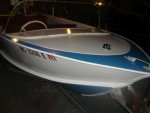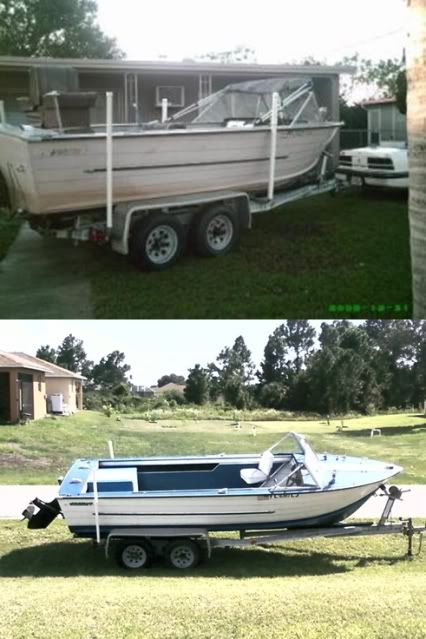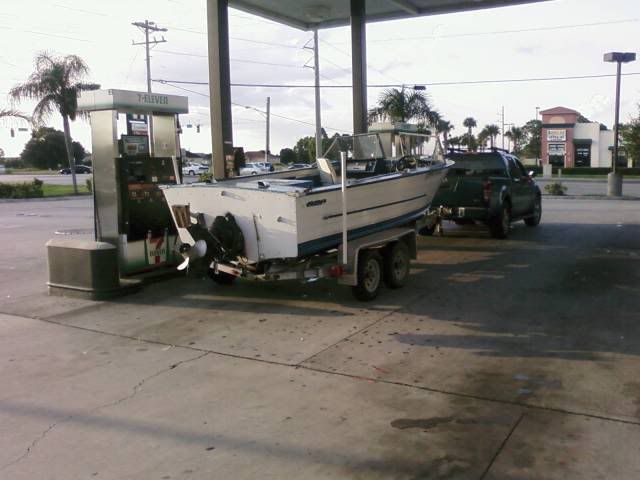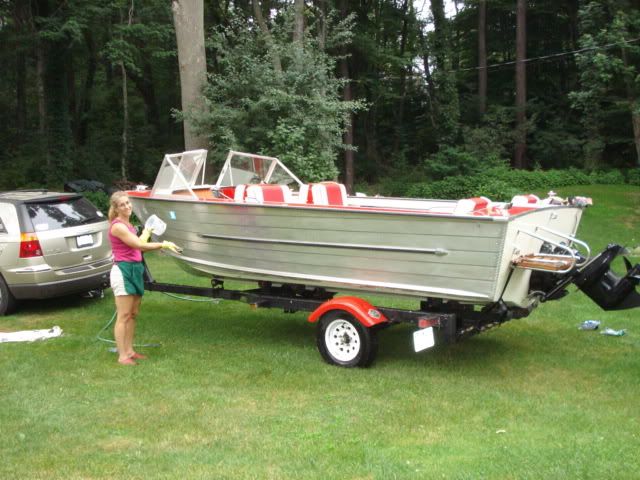Re: Rustoleum paint job sucks!!! Bad advice?
When it comes to painting most boats, for the average guy, the Rustoleum paint job will suffice. If your painting aluminum, there will always be certain steps and primers that you cannot avoid but once primed properly aluminum can be painted successfully with Rustoleum or any other consumer type paint.
Would I paint my car with it, of course not, but for the guy with a weekend fishing boat or family cruiser on the lake that will no doubt get a few nicks and dings over the years, Rustoleum is certainly a decent choice. Once the boat is primed, touch up and repair is easy, certainly easier than fixing an automotive type paint finish, and if done correctly, the level of gloss, orange peel, and general smoothness can rival that of a sprayed on acrylic finish, even when done with a roller.
I would have never believed it or tried it but years ago I had a buddy that painted signs for a living, he drove an old beat up pickup that was 5 shades of primer. After years of teasing, he finally took a can of paint and painted the thing, with a roller. If I hadn't have seen it being done, I'd have never believed it was done with a roller. The truck looked far better than many back yard spray jobs, and for that matter it looked better than may custom paint jobs. He used a hard foam roller, regular gloss sign paint, he actually mixed up a bunch of leftover colors till he had about a gallon can full, the result was a bright purple/burgundy color but it came out looking super. I'd have let him paint my truck that way in a heartbeat. He masked all the edges, started from the top of the cab, standing in the bed, then worked his way downward till it was all done, he did this outside in the dirt driveway. He did the cab one day, the bed the next.
Something I learned by watching him that day was that paint will flow out, and if not put on too heavy, it will level itself out without running leaving a perfectly smooth finish with no runs. There's a fine line between those points.
As far as adhesion of paint, do a search on what is called the water break free method of checking to see if the surface is clean. Here's one article that comes to mind, although not on a boat, the basic idea is the same:
http://www.rodbuilding.org/library/waterfree.html
In a nutshell, paint will only adhere well to a perfectly clean surface. If you have chipping issues, peeling, or generally poor adhesion, the surfaces most likely weren't prepped right or weren't clean.
I once worked for a guy that owned a dozen or so delivery vans, they got banged up all the time and repairs were done as cheaply as possible at the company repair shop out back. I worked there for about 6 years, he was a stickler for keeping all the trucks looking presentable, at least when viewed from a fair distance. There was no way he'd let a partially painted or repaired van be seen by the public. The company logos were all premade vinyl decals, and all were painted the same shade of eggshell white.
His method was simple, fix the dent or replace the panel, prime bare metal, mask off chrome, trim, and glass, and wipe the whole truck down with a clean rag and gasoline, let it dry and shoot the whole thing, no matter what. If it needed a fender, the whole thing got painted. I hated working there, the guy was a bit of a butcher when it came to those trucks but looking back, his theory was right, keep them all clean looking and presentable, and keep them well painted and mechanically sound and they will last forever. Those vans were 1969 to 1974 models, this was in the mid 1980's, and he ran that same fleet only adding an occasion new van when one was totaled. They were all painted with Rustoleum.
They were all sprayed with a cheap Sears spray gun which he himself modified the tip to shoot thick paint. He was the only one at first that would shoot the paint or wipe down the vans for prep. He'd wash the van down with gas, then wash the van down in dish detergent, some odd brand that had no scent, and then he'd wet down the whole garage bay, turn up the heat and shoot the paint. Those vans weren't pretty, but they had a good shine, the paint stuck, and they were always one color. From 30' away they looked great, but up close the many layers of paint showed. When I left there, after he had passed away, I ended up with one of the newer vans that had been painted that way as a work truck. I decided to strip it down and give it a decent paint job. The result was two weeks of paint stripping to get off that paint. It was so well adhered I ended up grinding it off with heavy sandpaper and when through several rolls of sandpaper. Each and every layer was well adhered and didn't want to come off. The van had about 5 coats on it, between each had been prepped by his gasoline cleaning method, and in most cases, no sanding was done. It was the equivalent of getting chewing gum out of carpet trying to strip that van down.
Something else that I've seen change over the years is the advent of low VOC paints, and lead free paint, it seems to me that the older paints just stuck better and gave better results. I found this out when one local tractor supply house changed to the newer paints years ago, we soon found that going out of state to buy paint without the new formula applied got you far better paint that didn't fade or peel.
This may have something to do with the fact that the Rustolastic paints I've been using were commercially supplied and not retail packaged, they still contain lead, and are not low voc compliant paints.
Dry time to the touch is about 10 hours, but no enamel will be fully cured for at least a week, often longer. Several buddies in the bodyshop business often said that cold water helps the curing process after the paint dried to the touch. They would often bath a fresh painted car in cold water after the paint dried before any finishing buffing was done. Whether this has any scientific basis I don't know but I do know several body shops that still do it.

























